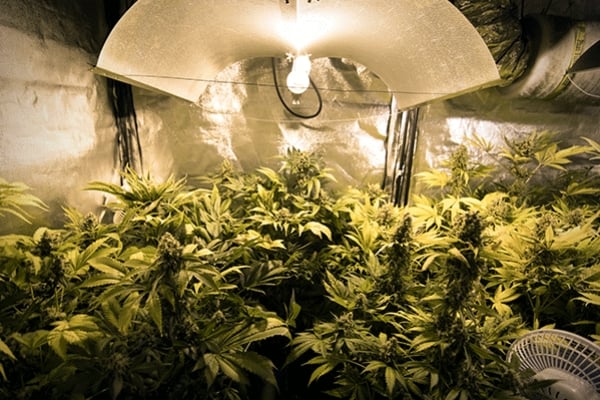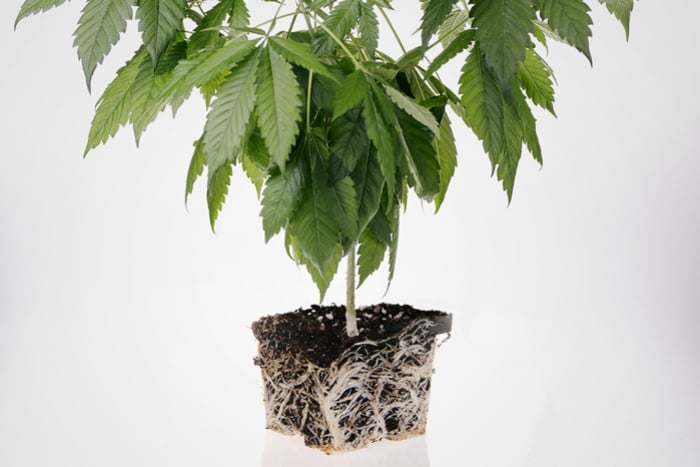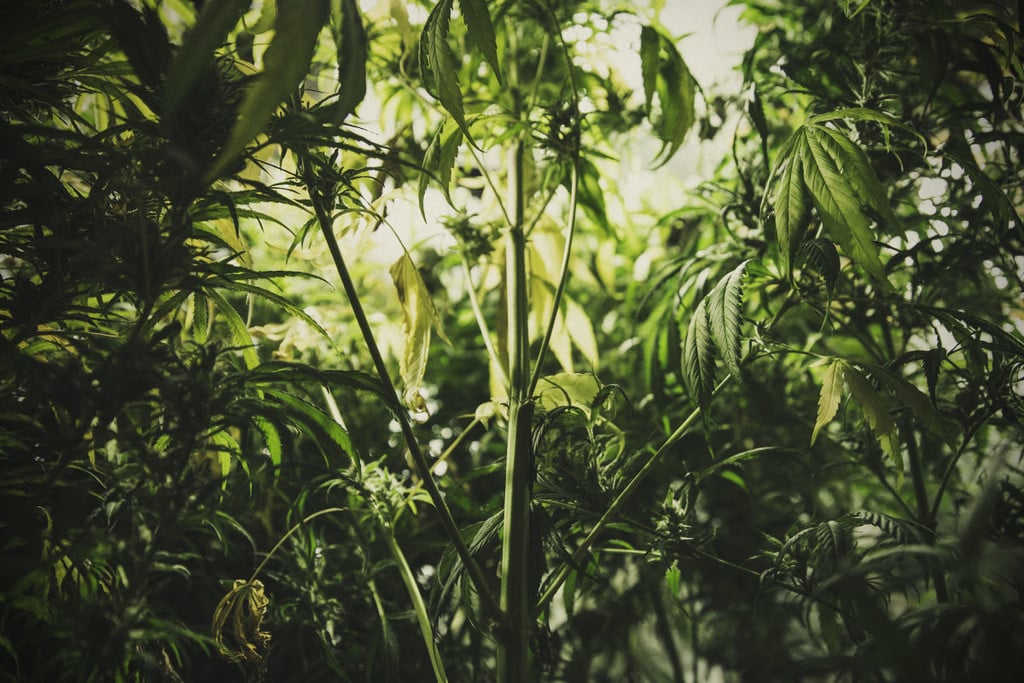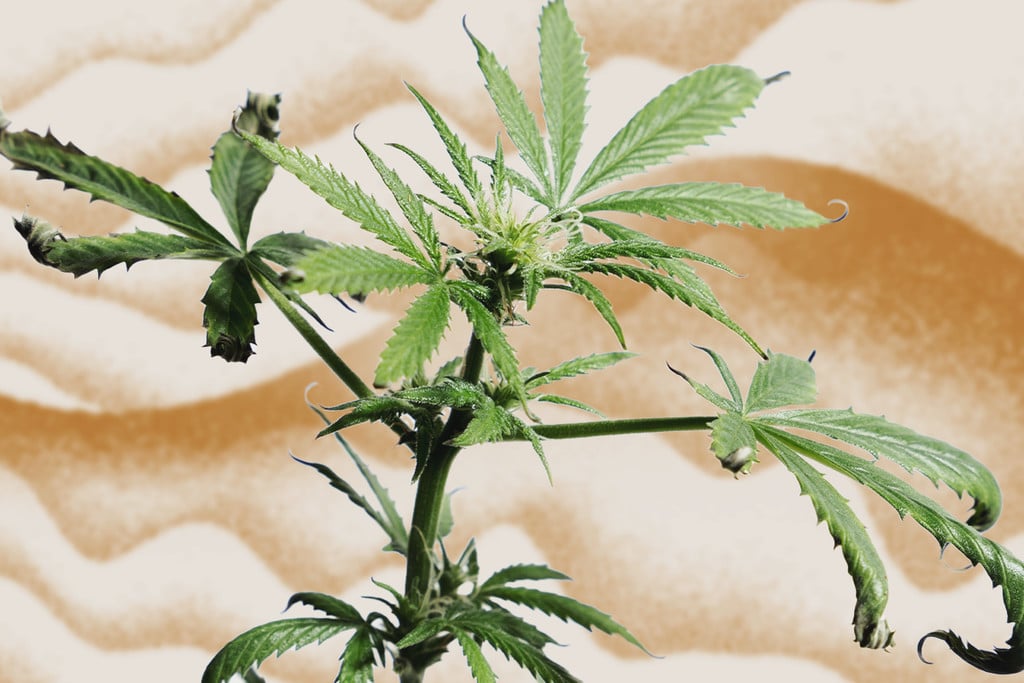 Weed Grow Guide by Royal Queen Seeds
Weed Grow Guide by Royal Queen Seeds
- Growing weed step by step
- Marijuana growing basics
- Choosing your seeds
- How to germinate seeds
- The marijuana vegetative stage
- The marijuana flowering stage
- Harvesting marijuana
- Trimming, drying, and curing
- Choosing pots and soil
-
Growing indoors
- A Complete Overview Of Growing Cannabis Indoors
- Cannabis Cultivation Tips: How To Set Up Indoor Grow Lights
- How Many Cannabis Plants Can You Grow Per Square Metre?
- Indoor Cannabis Growing: Relative Humidity and Temperatures
- Hydroponics Cannabis Growing Guide (with diagrams)
- Cannabis Micro Growing: Growing Great Weed in Tiny Spaces
- Growing outdoors
- How to grow autoflowering marijuana
- Marijuana nutrients and pH
- Marijuana troubleshooting: Nutrients
-
Marijuana troubleshooting: Growing
- Cannabis Seed Germination — Troubleshooting Guide
- How to Deal With Pythium (Root Rot) in Cannabis Plants
- Slow Cannabis Plant Growth And What You Can Do About It
- How to Deal With Leggy Cannabis Seedlings
- Watering Your Cannabis: How to Fix Overwatering and Underwatering
- Understanding Male, Female, And Hermaphrodite Cannabis
- Identifying and Treating Common Cannabis Ailments
- How To Revive a Sick Cannabis Plant
- How to Avoid Moldy Marijuana During Drying and Curing
- How to Prevent and Treat Dry and Crispy Cannabis Leaves
- What Cannabis Leaves Can Tell You
- Causes and Solutions for Yellow Cannabis Leaves
-
Marijuana Strains Grow Report
- HulkBerry Automatic Grow Report
- Blue Cheese Auto Grow Report
- Purple Punch Automatic Strain Grow Report
- Triple G Automatic Grow Report
- Do-Si-Dos Automatic Grow Report
- Green Gelato Automatic Grow Report
- Haze Berry Automatic Grow Report
- Purple Queen Automatic Grow Report
- Cookies Gelato Automatic Grow Report
- Sherbet Queen Automatic Grow Report
- Sweet Skunk Automatic Grow Report
- Medusa F1 Grow Report
- Marijuana plant training
-
Marijuana growing tips
- The Cannabis Plant Anatomy
- How to preserve seeds - RQS USA
- How Much Sunlight Do Outdoor Cannabis Plants Need To Grow?
- How to Control and Prevent Stretching in Cannabis Plants
- My Cannabis Plants Are Growing Too Tall: What Should I Do?
- Should You Worry About Purple Or Red Cannabis Stems?
- What To Do When Your Indoor Cannabis Won’t Flower
- How To Protect Your Cannabis Plants From Heat Stress
- How To Tell If Your Female Cannabis Plant Has Been Pollinated
- Growing Medical Marijuana
- Bud Washing: How to Clean Your Weed
- Understanding Cannabis Yield per Plant

How to Deal With Leggy Cannabis Seedlings
Contents:
- Understanding the seedling phase
- The perfect light conditions for cannabis seedlings
- What causes abnormal stretching?
- How to prevent cannabis seedlings from stretching
- What to do if your seedlings have already stretched
- Risks of placing led grow lights too close to plants
- Influence of light spectrum and light distance on stretching
- Thinning your cannabis seedling crop to prevent stretching
- Preventing leggy cannabis seedlings: a botanical balancing act
Just like baby humans, cannabis seedlings are super fragile and need plenty of tender loving care to flourish. Unfortunately, many growers run into the same issue during the early stages of their cannabis plants’ lives; their seedlings grow long and stretchy with weak stems.
This, in turn, can lead to a host of issues that put your crop at risk of delivering subpar results. Below, you’ll learn how to prevent and fix stretching in cannabis seedlings.
Understanding the Seedling Phase
Cannabis seeds are equipped with all of the vital nutrients needed to sustain a seedling during the first few days of growth. However, they still need to drink.
In optimal conditions, the seed shell will crack open and a taproot will pop out, immediately digging downward in search of water. Soon, you will see a sprout rise from under the soil, spread out its first baby leaves (cotyledons), shortly followed by the first set of true leaves.
Leaves have an equally important job as the taproot, but they are in search of other energy sources—light and carbon dioxide. This duo helps seedlings create the sugars they need to spur rapid and healthy growth.
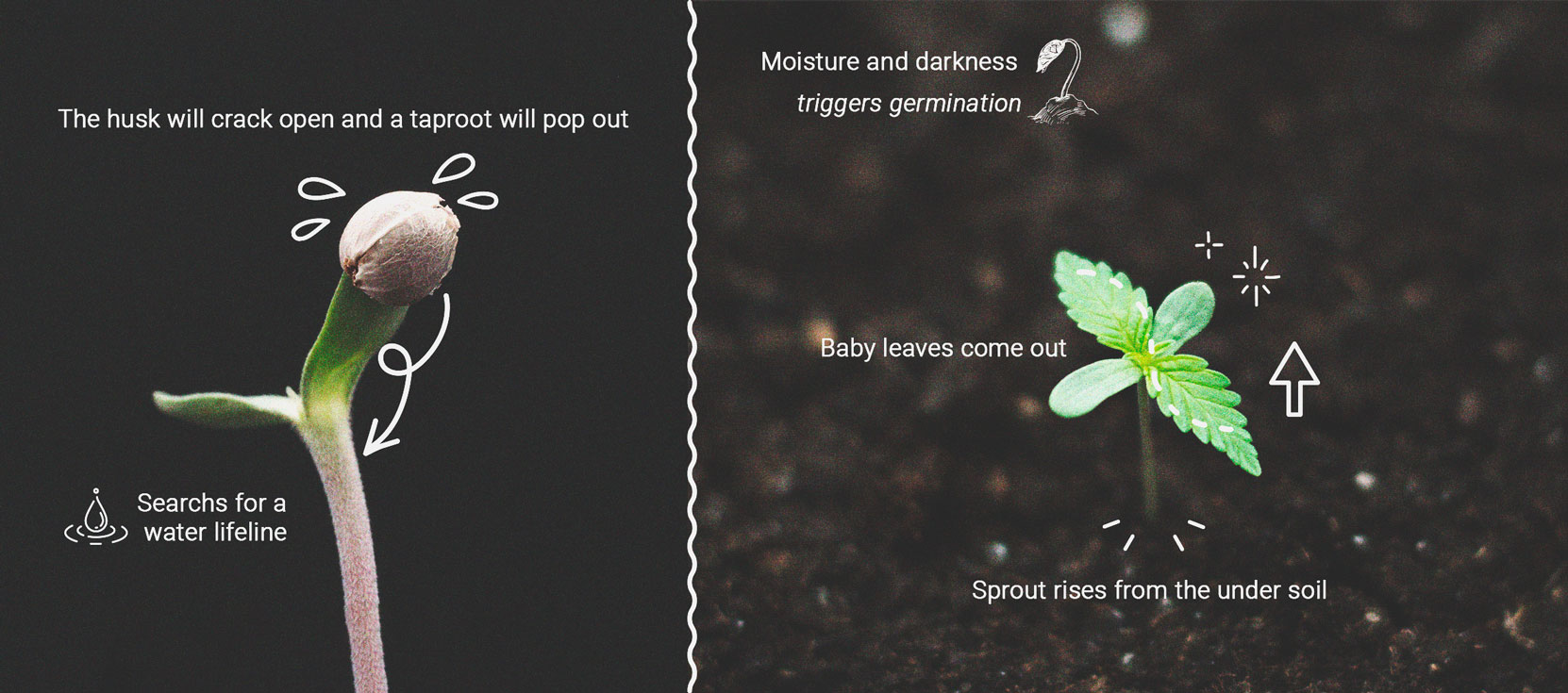

The Perfect Light Conditions for Cannabis Seedlings
To grow healthy seedlings, it’s important to give them the right amount and type of light as soon as they break out of their shells. Cannabis seedlings like to receive around 18 hours of light per day at an intensity of 375 lumens and 4000 lux.
Meeting these requirements depends on several variables, including the type of light you're using and the size of your growing space. For a small area of 30×30 inches, a 150 W LED grow light positioned 10 inches above your seedling will suffice.
What Causes Abnormal Stretching?
If you notice your cannabis seedling stretching too much, it’s likely a response to stress—typically due to inadequate light, which can eventually cause the seedling to topple over.
In the same way taproots dig for water and nutrients, the top part of the plant will stretch vigorously if it’s not receiving enough light. It’s a survival mechanism in which a plant uses up all its stored energy to rise above competing flora. Indoors, there’s no competition—but your seedling still behaves as if there is.


Other Potential Causes of Stretchy Cannabis Seedlings
Besides light deprivation, there are a handful of other factors that cause cannabis seedlings to stretch. One common cause of leggy seedlings is poor nutrient content in the soil.
More precisely, cannabis seedlings benefit from nitrate-derived nitrogen. Unlike ammoniacal nitrogen, nitrate-nitrogen is a lot easier for plants to absorb and fuels shorter, bushier vegetative growth. If your seedlings are stretching despite ideal light conditions, we highly recommend checking the ammoniacal nitrogen content in your soil and fertilizer.
Another cause of tall, thin seedlings is heat. While cannabis seedlings like warm, humid conditions, too much heat can cause a plant’s leaves to grow more slowly than its stem, resulting in tall and stretchy growth.
To promote healthy seedling growth, we recommend keeping the temperatures in your grow room at 65°F during the day and roughly 55°F at night.
Finally, cannabis seedlings can also stretch if they’re receiving too much or not enough light per day. While some growers opt to keep their seedlings under 24 hours of light per day, we recommend sticking to 18 hours to keep running costs down.
Seedlings are fragile, and giving them too much light can cause stress and stretching. Remember, those dark hours are just as important for your young plants to develop healthy roots and respire.
How to Prevent Cannabis Seedlings From Stretching
To prevent your cannabis seedlings from stretching, it’s crucial to dial in lighting variables, including intensity and distance from the canopy. Using LED grow lights from Royal Queen Seeds in accordance with these principles will ensure healthy, stocky seedlings every time you grow.
For example, when using the Mars Hydro FC1500 150 W LED Grow Light, position it 10–20 inches from the tip of your plants throughout the seedling phase to provide enough intensity while reducing the risk of burning. Likewise, position the more powerful Mars Hydro FC3000 300 W LED Grow Light 20–25 inches from the tip of your seedlings to hit that growth sweet spot.
With your lighting situation perfected, use these additional tips to further reduce the chances of your weed seedlings stretching:
- Use a timer to maintain 18–24 hours of light per day during the seedling phase.
- Keep temperatures between 70–80°F and humidity around 65–70%.
- Only water your seedlings when the top inch of soil feels completely dry to avoid damping off.
What to Do if Your Seedlings Have Already Stretched
Check out the simple tips below to correct leggy marijuana seedlings:
- Transplant deeper: Bury part of the stem during transplanting to stabilize your seedling. Mix in a generous amount of perlite or vermiculite into the top 2 inches of soil to boost aeration and prevent the stem from rotting in overly wet soil.
- Add support: Use small stakes and ties to keep your seedling upright and prevent it from collapsing.
- Improve lighting: Move your light into the recommended distance of the top of the seedling and keep it running for 24 hours per day for a week until your plant strengthens.
- Increase airflow: After stabilising and supporting your plant, aim a gentle fan at the stem of your plant to help it adapt to light stress and grow stronger.
Risks of Placing LED Grow Lights Too Close to Plants
LED grow lights are certainly effective at helping cannabis plants grow strong and healthy. However, placing your light too close can expose plants to excess light and heat, which has a detrimental impact on seedling growth. Look out for these signs of light stress during the seedling phase:
- Light burn: Also known as phototoxicity, seedlings exposed to excess light intensity will exhibit symptoms such as bleaching, curling, and necrosis (tissue death).
- Stunted growth: Excess heat emitted from lights positioned too close to seedlings can cause plants to become stressed, inhibiting their growth.
- Patchy growth: Lights positioned too close to plants can cause leaves in the center to become overly lit, while those around the edges become under-lit and appear more pale, possibly even yellow.
Influence of Light Spectrum and Light Distance on Stretching
LED grow lights emit different wavelengths that have varying effects on plant cells in terms of growth and potential stress. Cannabis plants are much more tolerant of narrow-spectrum LEDs that emit mostly red and blue wavelengths. Because these lights emit less heat, growers can place them within several inches of the tips of seedlings.
In contrast, broad-spectrum LED cannabis grow lights also emit white wavelengths and more heat. Position these lights according to their wattage. For example, aim to place 150 W LEDs around 10 inches from the tips of seedlings, and 300 W lights at least 20 inches away.
As well as adhering to these general guidelines, you should get into the habit of observing your seedlings and reacting accordingly. Look out for signs of stretching or stress and move your light closer or further away, respectively.
Likewise, you’ll need to continually readjust the height of your light as your plant grows taller. Simply use a tape measure and your ratchet straps to reposition your LED light source.


Thinning Your Cannabis Seedling Crop to Prevent Stretching
Thinning is a common agricultural technique that’s often forgotten among cannabis growers. As the name suggests, thinning is all about reducing competition among your plants by “thinning” out the population.
Cannabis plants grow very quickly and will naturally compete with one another for space, light, and nutrients. So, while you may have been taught to think that more plants will naturally translate into bigger, better harvests—that's not always the case.
In fact, many experienced growers opt to cull their weakest seedlings and only grow those that show the healthiest growth. This way, they focus their efforts on the plants most likely to produce the best flowers.
Thinning also helps growers maintain an even canopy across their grow room, which makes better use of limited light and space. Finally, thinning can help you avoid pests and other pathogens, as your grow space is less likely to be crowded.
To thin your plants, simply keep a close eye on your seedlings throughout the first 1–2 weeks of their life, and only keep those specimens that exhibit the healthiest, fastest growth.
Preventing Leggy Cannabis Seedlings: A Botanical Balancing Act
Stretchy cannabis seedlings are a common challenge, especially for new growers. But don’t fret—legginess isn’t a death sentence!
With proper lighting, thoughtful positioning, smart transplanting techniques, and climate management, you can easily rescue stretchy seedlings before they grow too lanky. Applying these principles going forward, you’ll prevent legginess altogether, resulting in much smoother growing operations and healthier and more productive plants.
 Grow Guide Topic Finder
Grow Guide Topic Finder
- Growing weed step by step
- Marijuana growing basics
- Choosing your seeds
- How to germinate seeds
- The marijuana vegetative stage
- The marijuana flowering stage
- Harvesting marijuana
- Trimming, drying, and curing
- Choosing pots and soil
-
Growing indoors
- A Complete Overview Of Growing Cannabis Indoors
- Cannabis Cultivation Tips: How To Set Up Indoor Grow Lights
- How Many Cannabis Plants Can You Grow Per Square Metre?
- Indoor Cannabis Growing: Relative Humidity and Temperatures
- Hydroponics Cannabis Growing Guide (with diagrams)
- Cannabis Micro Growing: Growing Great Weed in Tiny Spaces
- Growing outdoors
- How to grow autoflowering marijuana
- Marijuana nutrients and pH
- Marijuana troubleshooting: Nutrients
-
Marijuana troubleshooting: Growing
- Cannabis Seed Germination — Troubleshooting Guide
- How to Deal With Pythium (Root Rot) in Cannabis Plants
- Slow Cannabis Plant Growth And What You Can Do About It
- How to Deal With Leggy Cannabis Seedlings
- Watering Your Cannabis: How to Fix Overwatering and Underwatering
- Understanding Male, Female, And Hermaphrodite Cannabis
- Identifying and Treating Common Cannabis Ailments
- How To Revive a Sick Cannabis Plant
- How to Avoid Moldy Marijuana During Drying and Curing
- How to Prevent and Treat Dry and Crispy Cannabis Leaves
- What Cannabis Leaves Can Tell You
- Causes and Solutions for Yellow Cannabis Leaves
-
Marijuana Strains Grow Report
- HulkBerry Automatic Grow Report
- Blue Cheese Auto Grow Report
- Purple Punch Automatic Strain Grow Report
- Triple G Automatic Grow Report
- Do-Si-Dos Automatic Grow Report
- Green Gelato Automatic Grow Report
- Haze Berry Automatic Grow Report
- Purple Queen Automatic Grow Report
- Cookies Gelato Automatic Grow Report
- Sherbet Queen Automatic Grow Report
- Sweet Skunk Automatic Grow Report
- Medusa F1 Grow Report
- Marijuana plant training
-
Marijuana growing tips
- The Cannabis Plant Anatomy
- How to preserve seeds - RQS USA
- How Much Sunlight Do Outdoor Cannabis Plants Need To Grow?
- How to Control and Prevent Stretching in Cannabis Plants
- My Cannabis Plants Are Growing Too Tall: What Should I Do?
- Should You Worry About Purple Or Red Cannabis Stems?
- What To Do When Your Indoor Cannabis Won’t Flower
- How To Protect Your Cannabis Plants From Heat Stress
- How To Tell If Your Female Cannabis Plant Has Been Pollinated
- Growing Medical Marijuana
- Bud Washing: How to Clean Your Weed
- Understanding Cannabis Yield per Plant





























